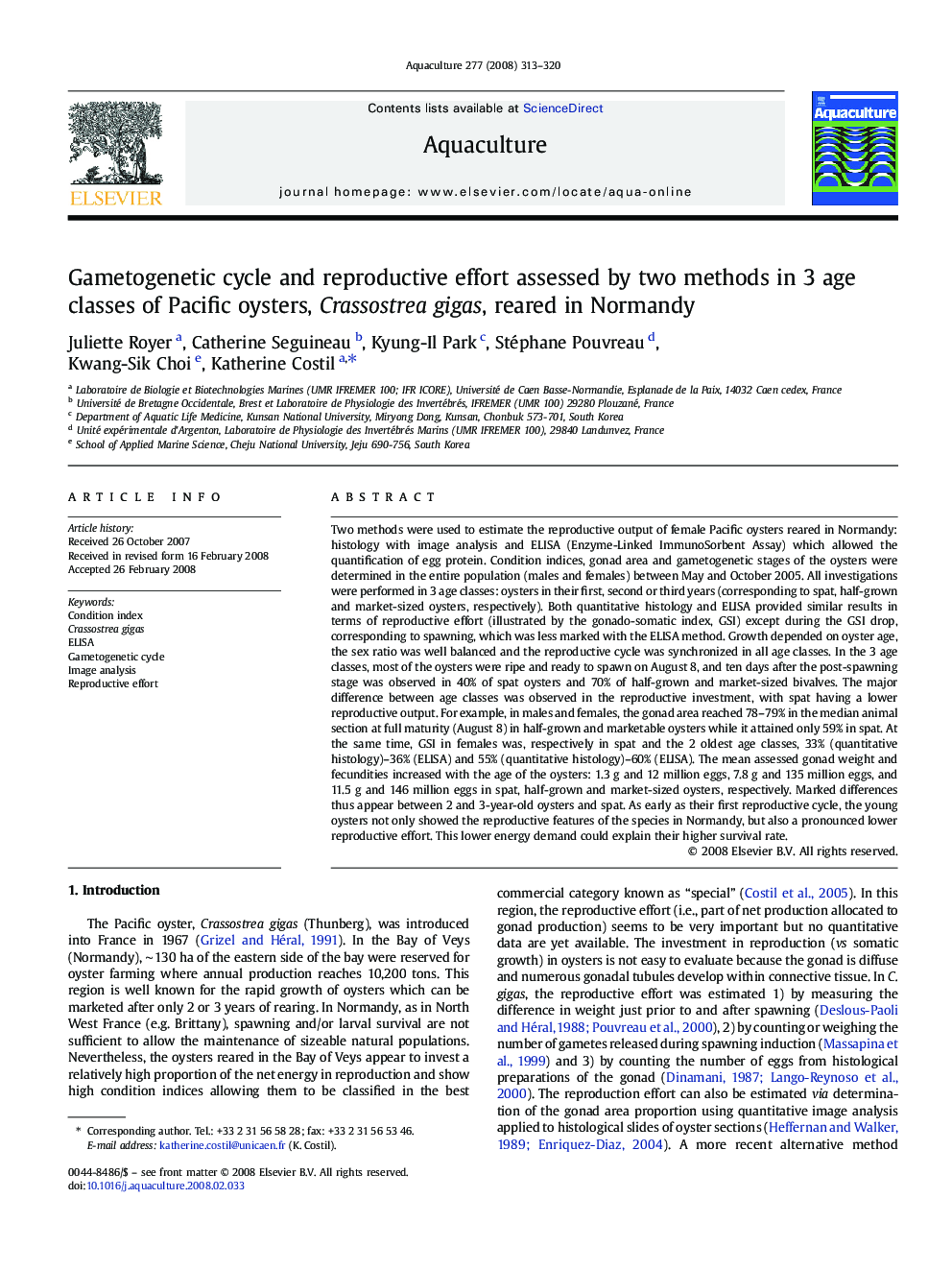| کد مقاله | کد نشریه | سال انتشار | مقاله انگلیسی | نسخه تمام متن |
|---|---|---|---|---|
| 2424828 | 1552964 | 2008 | 8 صفحه PDF | دانلود رایگان |

Two methods were used to estimate the reproductive output of female Pacific oysters reared in Normandy: histology with image analysis and ELISA (Enzyme-Linked ImmunoSorbent Assay) which allowed the quantification of egg protein. Condition indices, gonad area and gametogenetic stages of the oysters were determined in the entire population (males and females) between May and October 2005. All investigations were performed in 3 age classes: oysters in their first, second or third years (corresponding to spat, half-grown and market-sized oysters, respectively). Both quantitative histology and ELISA provided similar results in terms of reproductive effort (illustrated by the gonado-somatic index, GSI) except during the GSI drop, corresponding to spawning, which was less marked with the ELISA method. Growth depended on oyster age, the sex ratio was well balanced and the reproductive cycle was synchronized in all age classes. In the 3 age classes, most of the oysters were ripe and ready to spawn on August 8, and ten days after the post-spawning stage was observed in 40% of spat oysters and 70% of half-grown and market-sized bivalves. The major difference between age classes was observed in the reproductive investment, with spat having a lower reproductive output. For example, in males and females, the gonad area reached 78–79% in the median animal section at full maturity (August 8) in half-grown and marketable oysters while it attained only 59% in spat. At the same time, GSI in females was, respectively in spat and the 2 oldest age classes, 33% (quantitative histology)–36% (ELISA) and 55% (quantitative histology)–60% (ELISA). The mean assessed gonad weight and fecundities increased with the age of the oysters: 1.3 g and 12 million eggs, 7.8 g and 135 million eggs, and 11.5 g and 146 million eggs in spat, half-grown and market-sized oysters, respectively. Marked differences thus appear between 2 and 3-year-old oysters and spat. As early as their first reproductive cycle, the young oysters not only showed the reproductive features of the species in Normandy, but also a pronounced lower reproductive effort. This lower energy demand could explain their higher survival rate.
Journal: Aquaculture - Volume 277, Issues 3–4, 3 June 2008, Pages 313–320